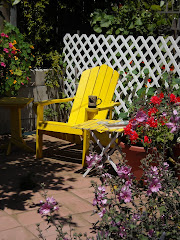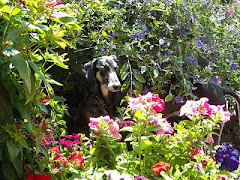Stephen Spielberg’s new movie, “War Horse,” has jumped the shark, galloped off into the ditch, and in doing so, I think he’s invented a new genre first pioneered by Mel Brooks: The World’s Worst Mash Up.
Think, “Springtime for Hitler.” Think “National Velvet's Longest Day.” Think, “Winnie the Pooh inAuschwitz .”
I mean, before this there’s been children’s stories, then there’s been realistic adult stories about brutal trench warfare in WWI. But now, thanks to Spielberg, we have a heart-warming PG-13 tale in a new film that combines both! You’ll laugh. You’ll cry. Mostly you’ll cringe!
Worse, Spielberg seems to think his audience consists of dolts so he has long pauses filled with . . . . meaningful . . . looks: boy gazes soulfully at horse, horse gazes at camera, English officers gaze at one another as they contemplate death in a muddy ditch or being shot to pieces on the wires, horses gaze at one another. All this mooning and staring and gazing is supposed to convey the high “seriousness” of this whole misbegotten project. Oh, and let’s not forget, the endless times when everyone stares at the horse and reminds the audience that that sure is a very special horse, that is. Yessir.
And did I forget to mention John Williams’ score, there at every possible moment to goose the tear-ducts, in case some inattentive audience member forgot to feel his heart-strings tugged at the pre-designated spots?
In short, from beginning to the appalling end – lifted straight from “Gone With The Wind.” You remember that famous, melodramatic tableux, the hyper-saturated blazing orange evening sky, Scarlett O’Hara in silhouette, fist raised holding a radish? Yes, that one – the movie is utterly dishonest --one long mash-up of rigged clichés, all of them hoary.
Or utterly phony. Take the scene of the British cavalry mustering on the training field to practice their sabres-drawn, full battle charges. It's a bright sunny day. Not a cloud in the sky. Suddenly, the screen is filled with fog, out of which thunders the charging horses. Very dramatic, but . . . fog? The establishing shot showed it was a bright sunny day. Where did the fog come from? Worse, as the camera pans back we can see the bright sunny sky all around the bellowing patch of fog. Unless the audience is to believe that the British high command would regularly require fake smoke machines during their practice cavalry maneuvers, then the only reason for the fake fog is simply this: Spielberg goosing the audience with phony, whiz-bang dramatic tableaux simply because it looked waaaaayyy cool.
This sorry willingness to put an irrestible single swell moment above the coherence of the narrative appears in more apalling form as our heroic horse completes his spectaculrly filmed scenes fleeing across no man's land only to get horribly tangled and trapped in the barbed wire. There he founders, cut and suffering. It's an awful moment until both British and German soldiers realize the animal's agonizing entrapment and, under a white flag, go out to cut him free. When the German soldier calls to his mates for wire cutters, out of the trenches flies a half dozen, into the air to land with comic thumps. The audience laughs uproariously, utterly forgetting the poor horse, the hero of this film, who is muzzle down in the mud. And so a powerful dramatic, moving moment was lost because Spielberg couldn't resist a bit of comic business that better belonged in a Bugs Bunny cartoon. And so it went, the fake foundering the real, with silly Spielbergian indulgences breaking the narrative and knocking the willing suspension of disbelief out of the the theatre.
I should have known. In his “Schindler’s List,” a work of high seriousness (It was filmed in black and white so we’d know how highly serious it was), Spielberg went for pure kitsch. In a long-shot of Jews being herded down the street, he colorized the coat on a little girl in near subliminal palest rose. At first I thought my eyes were playing tricks on me, so I saw the film again. Nope. Little girl in palest rose coat, the only color in the scene. It was akin to pasting a huge blinking neon sign over her in order to make sure the audience got the message: “ Oh, Look, It’s a Pathetic Child. You must weep now.”
Imagine that scene running again and again and again for well over two hours. That’s “War Horse.”
And it's time that nag was sent to the knacker-man.
Think, “Springtime for Hitler.” Think “National Velvet's Longest Day.” Think, “Winnie the Pooh in
I mean, before this there’s been children’s stories, then there’s been realistic adult stories about brutal trench warfare in WWI. But now, thanks to Spielberg, we have a heart-warming PG-13 tale in a new film that combines both! You’ll laugh. You’ll cry. Mostly you’ll cringe!
Worse, Spielberg seems to think his audience consists of dolts so he has long pauses filled with . . . . meaningful . . . looks: boy gazes soulfully at horse, horse gazes at camera, English officers gaze at one another as they contemplate death in a muddy ditch or being shot to pieces on the wires, horses gaze at one another. All this mooning and staring and gazing is supposed to convey the high “seriousness” of this whole misbegotten project. Oh, and let’s not forget, the endless times when everyone stares at the horse and reminds the audience that that sure is a very special horse, that is. Yessir.
And did I forget to mention John Williams’ score, there at every possible moment to goose the tear-ducts, in case some inattentive audience member forgot to feel his heart-strings tugged at the pre-designated spots?
In short, from beginning to the appalling end – lifted straight from “Gone With The Wind.” You remember that famous, melodramatic tableux, the hyper-saturated blazing orange evening sky, Scarlett O’Hara in silhouette, fist raised holding a radish? Yes, that one – the movie is utterly dishonest --one long mash-up of rigged clichés, all of them hoary.
Or utterly phony. Take the scene of the British cavalry mustering on the training field to practice their sabres-drawn, full battle charges. It's a bright sunny day. Not a cloud in the sky. Suddenly, the screen is filled with fog, out of which thunders the charging horses. Very dramatic, but . . . fog? The establishing shot showed it was a bright sunny day. Where did the fog come from? Worse, as the camera pans back we can see the bright sunny sky all around the bellowing patch of fog. Unless the audience is to believe that the British high command would regularly require fake smoke machines during their practice cavalry maneuvers, then the only reason for the fake fog is simply this: Spielberg goosing the audience with phony, whiz-bang dramatic tableaux simply because it looked waaaaayyy cool.
This sorry willingness to put an irrestible single swell moment above the coherence of the narrative appears in more apalling form as our heroic horse completes his spectaculrly filmed scenes fleeing across no man's land only to get horribly tangled and trapped in the barbed wire. There he founders, cut and suffering. It's an awful moment until both British and German soldiers realize the animal's agonizing entrapment and, under a white flag, go out to cut him free. When the German soldier calls to his mates for wire cutters, out of the trenches flies a half dozen, into the air to land with comic thumps. The audience laughs uproariously, utterly forgetting the poor horse, the hero of this film, who is muzzle down in the mud. And so a powerful dramatic, moving moment was lost because Spielberg couldn't resist a bit of comic business that better belonged in a Bugs Bunny cartoon. And so it went, the fake foundering the real, with silly Spielbergian indulgences breaking the narrative and knocking the willing suspension of disbelief out of the the theatre.
I should have known. In his “Schindler’s List,” a work of high seriousness (It was filmed in black and white so we’d know how highly serious it was), Spielberg went for pure kitsch. In a long-shot of Jews being herded down the street, he colorized the coat on a little girl in near subliminal palest rose. At first I thought my eyes were playing tricks on me, so I saw the film again. Nope. Little girl in palest rose coat, the only color in the scene. It was akin to pasting a huge blinking neon sign over her in order to make sure the audience got the message: “ Oh, Look, It’s a Pathetic Child. You must weep now.”
Imagine that scene running again and again and again for well over two hours. That’s “War Horse.”
And it's time that nag was sent to the knacker-man.


























